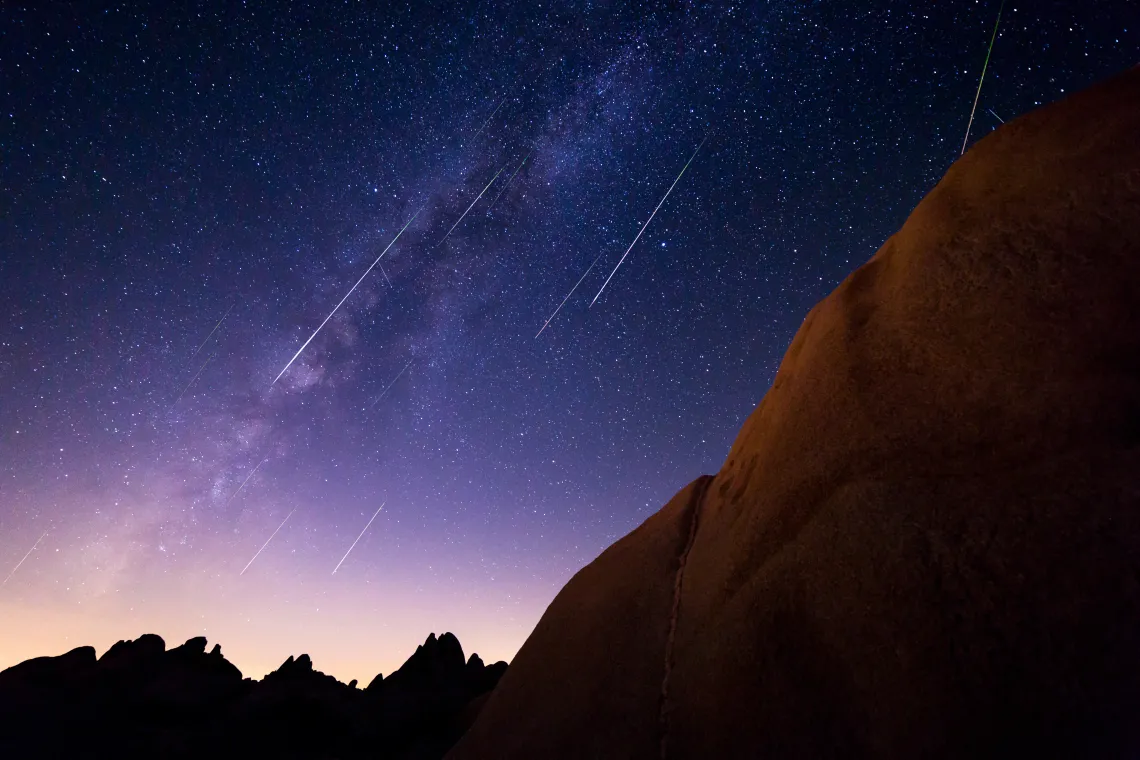
Updated for 2025!
Meteor showers happen several times throughout the year, but their visibility depends on a few factors, some predictable, some not. The biggest predictable factor is the Moon phase, so here are the best chances we have to see meteors in the coming months with that in mind:
The Delta Aquariids peak on July 30-31, with around 25 meteors/hour expected at the peak. The shower was first identified in 1870, but it wasn't until 2008 that the parent comet was discovered, P/2008 Y12 SOHO.
The Orionids peak on October 21-22, with around 20 meteors/hour expected at the peak. This shower was first identified in 1839, and its parent comet is the famous 1P/Halley.
For all meteor showers, the best viewing is in the early morning, between midnight and sunrise. Find a nice dark area where you can get an open view of the whole sky. Then just lay back and look up! Binoculars or a telescope won't help you here, so just use your eyes.
Science Snacks – Space Bites – All About Meteor Showers
Discover how and why Meteor Showers occur!
Note: This video references the Lyrid meteor shower, which occurs in April.

